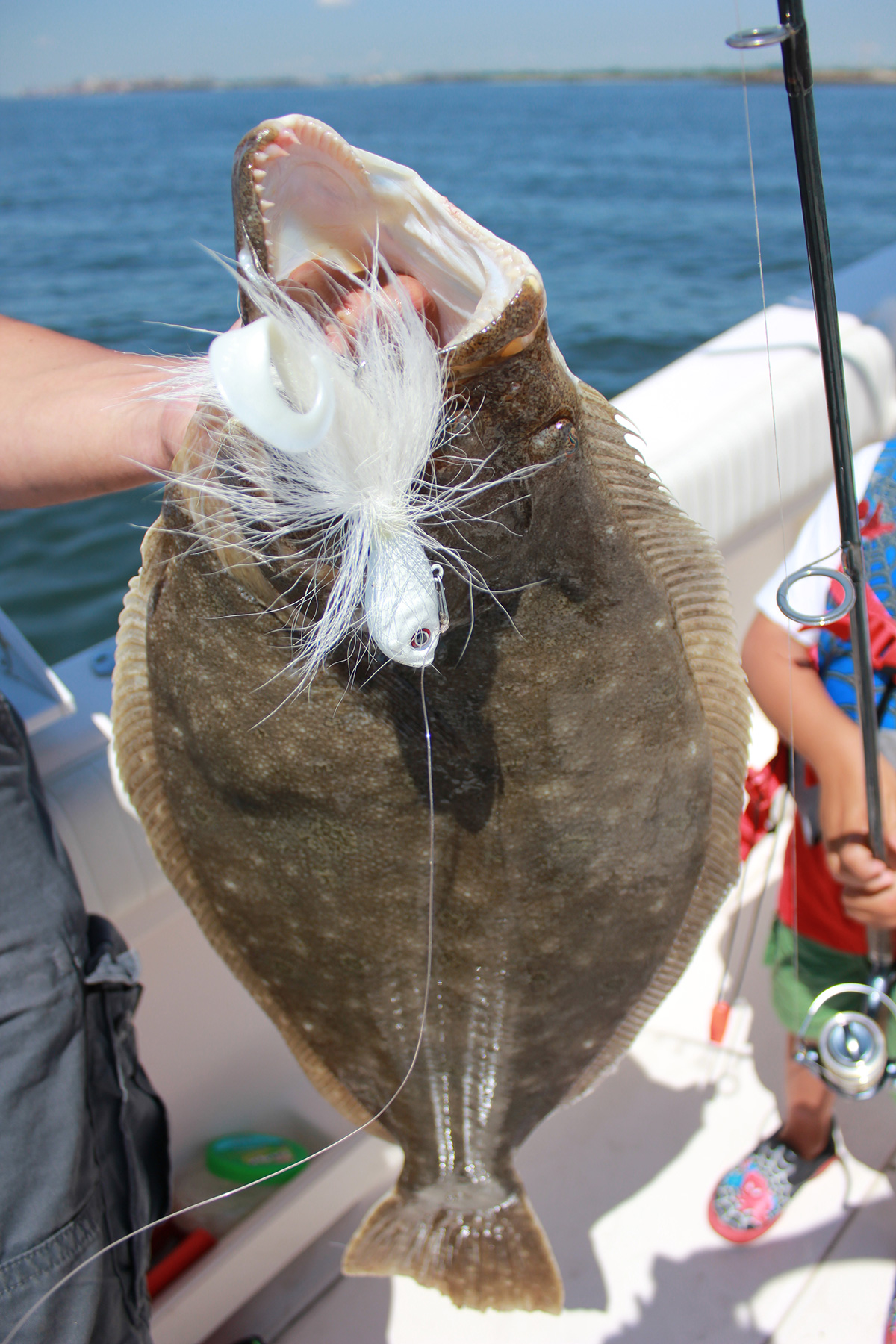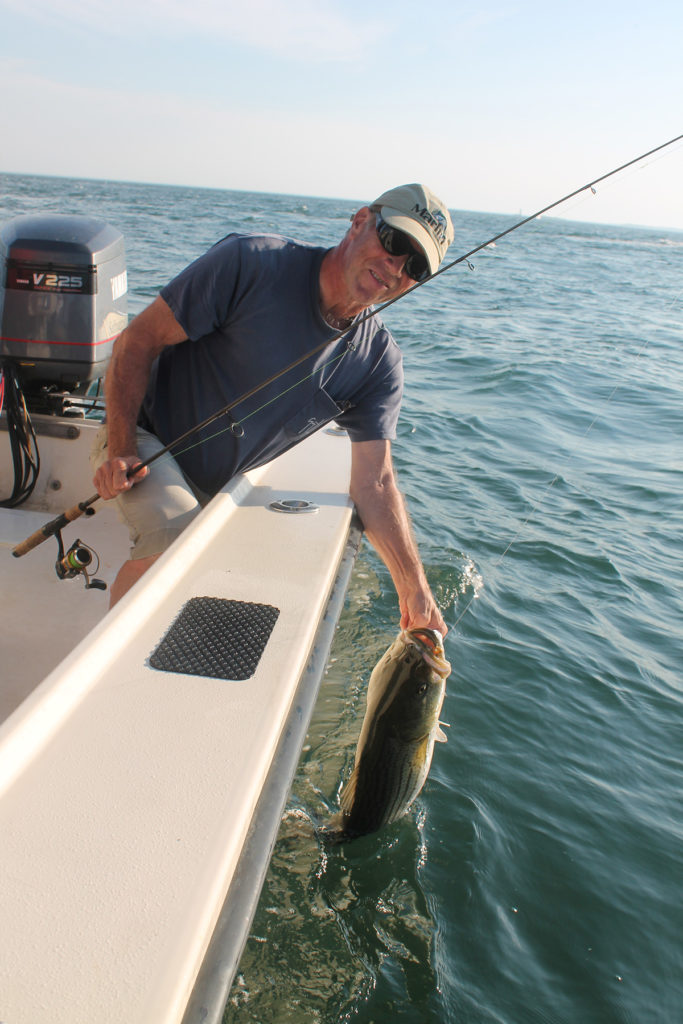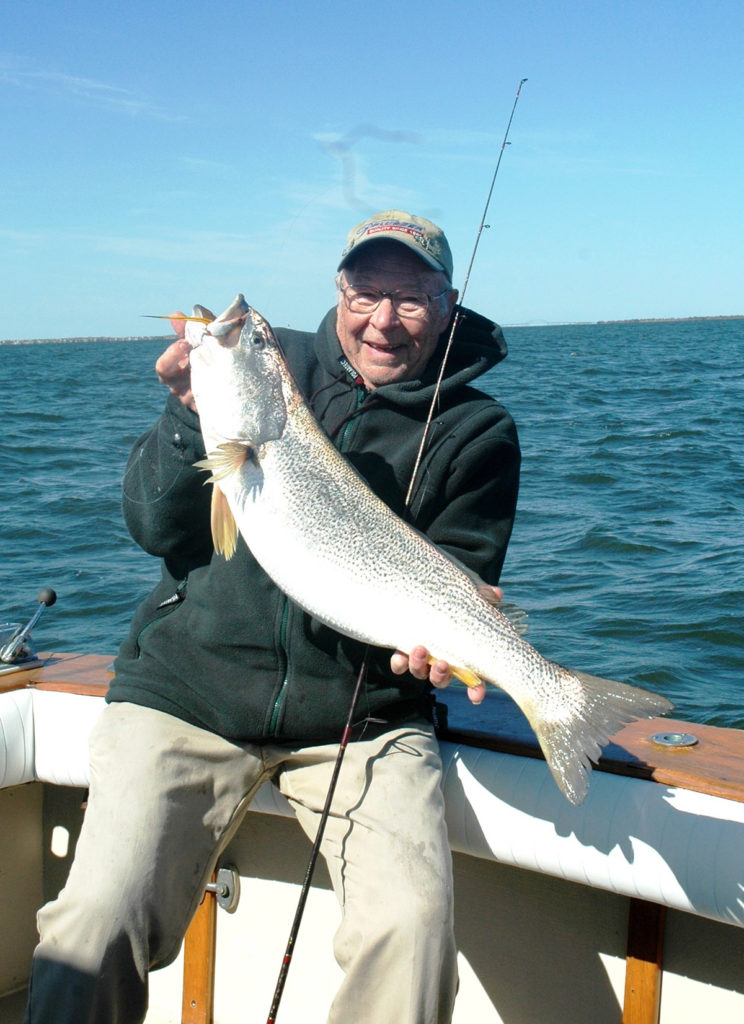
May is one of my favorite times of the year for a lot of reasons. The baseball season is in full swing, the landscape has shed its drab winter coat and is alive with color, the waterfront is once again a vibrant place, but most of all, my backyard waters of Great South Bay are full of promise for some of my favorite inshore species. Striped bass, bluefish, weakfish and fluke are all prime casting targets in the bay’s waters this month. In fact, catching all four species on the same trip is not uncommon if all the right pieces fall into place. If you set out to target the four, your odds of accomplishing the slam increase dramatically. Fishing in your own boat or a friend’s gives you the flexibility to accomplish this, but for those hopping aboard an open boat, especially those sailing evening trips, it is not out of the question to run into a mix of these species. Even shore bound anglers get into the action.
Beginning the last week of April and into mid-May, the mainland creeks and marina docks have been surrendering weakfish, stripers, blues and the occasional fluke on a fairly consistent basis. Weakfish are never a given as they seem to show up in years you least expect them, and then when you expect them to return following a good showing the previous year, they are nowhere to be found. When they do show, if the tiderunners are among them, these creeks do yield some big yellowfins as they satisfy their craving for the grass and sand shrimp that abound in these waters. I’ve caught them up to 14 pounds from local docks and have had numerous 10- to 12-pounders over the years. Some years, the last week of April presents an early opportunity to score with weakfish and small stripers, but your shot at a big tiderunner diminishes as the month of May progresses, and the fish vacate the creeks for the open bay.
Small stripers have been providing action as early as February in recent years but May has seen some quality bass fall to those who opt to chunk from bayside docks, among them, Bay Shore Marina, West Sayville and Patchogue, but certainly not limited to those spots. The presence of bait is the key to good action along the mainland shore and that has not been an issue of late, given the recent abundance of bunker, both adult and peanuts. The bunker have also drawn bluefish within range of mainland anglers, and they can range anywhere from 2 to 12 pounds.
This early action along the mainland is also made to order for the kayak set, yet I rarely see anyone taking advantage of it. Working dock lights after dark from a kayak would seem like an excellent opportunity to score with weaks and stripers in calm waters that are pretty much sheltered from most winds.
For the private boat set, the opportunities are virtually unlimited. Schools of blues, most of them in the 2- to 5-pound range, raid the bay every spring. Birds working over fish are a sure giveaway to their presence, although the past two years have seen schools of small stripers accompanied by a canopy of birds. The abundance of stripers, here and along the coast, is the result of two exceptionally strong Chesapeake Bay year classes since 2011, and they have been a blessing for light tackle anglers. A word to the wise – when approaching this type of surface action, don’t go racing into the middle of the action unless you want to draw the wrath of anglers in other boats. You’ll spoil the fishing for them and yourself as the fish will spook easily in the relatively shallow waters of the bay. Approach the action slowly and work the school from outside, or set up up-tide or up-current so that your drift eases you quietly into the action.

While birds are an obvious sign, you can catch plenty of bass and blues without the presence of birds. The shallows north and south of Dickerson Channel, the Bay Shore Flats, the flats in the northeast corner of the Captree (bay) Bridge, the shallows north of Sexton Island, Snakehill Channel, Heckscher flats, the flats surrounding East Island and the bars that border the channel entrances to Kismet and Fair Harbor are all areas where blind casting with topwater plugs, especially during the early morning hours, can produce both blues and bass. The State Boat Channel is a fishery within itself and is ripe with promising areas, most notably where drains empty into the channel. Always be on the lookout for glassy slicks on the surface they signify the presence of bait. If there is a strong odor associated with the slick, which we refer to as a “ripe slick,” there is a good chance gamefish are working over the bait below the surface. Work the slick with bucktails or leadheads tipped with soft plastics down deep, and there is the potential to come up with any one of the big three.
As the month progresses, especially weakfish, seem to show a preference for the deeper channels on the south side of the bay running along Point O’ Woods, Ocean Beach and west to the Fire Island Lighthouse, along with West Channel. These areas also hold fish early in the month, but they also draw a crowd, especially the Ocean Beach grounds. With other options earlier in the month, I prefer to avoid the crowds and the boat traffic, which includes a never ending parade of Fire Island ferries. If you plan on targeting these areas, try to fish them very early or late to avoid the boat traffic, which will put weaks and bass off their feed.
Fluke fishing these days does not get started until the third week of the month, which this season will again be May 17, but the size limit bumps up from 18 to 19 inches and the bag limit drops from five to three. If you want to target fluke, the State Boat Channel, the edges of the bars north of the Fire Island Coast Guard Station (the old Yellow Bar), the Robert Moses Bridge, inside the Oak Beach Bar, the Kismet Drain, Ocean Beach and West Channel are worth some effort. Looking to see where the Captree open boat fleet is concentrated will give you a pretty good clue as to where the biggest concentration of flatties has been in recent days. While the last couple of hours of the incoming tide and the start of the ebb is favored during most of the season for fluke, the outgoing, with its warmer bay waters, is sometimes the ticket to better action in the early part of the season, but that can vary from year to year, depending on water temperatures.
Light tackle is the way to go in May. Light to medium/light action spinning rods from 6 to 7 feet, depending on your preference and the ability to avoid rocket launchers while casting, matched to 2500 or 3000 series reels are ideal for fishing the bay. Spool up with 10-pound braid and top it off with 4 feet of 20-pound fluorocarbon leader joined by a double-uni, modified Albright or FG knot, and you’re set to go. At the terminal end, I prefer to tie direct to bucktails and leadheads, but you can go to a snap for metals and plugs. For light tackle fishing, I still prefer Duo-Lock snaps for their lower profile, over the bulkier and stronger quick clips.

Your spring arsenal can be kept pretty basic. Bucktails are a must and can range anywhere from 5/16 of an ounce to 1 ounce. A good selection of jigheads in the same weight range should also be in your box. For fishing the mainland creeks, keep in mind that downsizing your offerings is almost always the better choice, while fishing deeper water with current, you will want to lean toward the upper end. Even in deep water with strong current, you should never have to exceed an ounce if you angle your casts in the direction of your drift, which will keep your offering down near the bottom in the feeding zone.
A couple of topwater plugs, including a popper and a spook type plug in 1- to 1-1/2-ounce sizes, a couple of metals such as a 007 with a tube and a Kastmaster type of “tin” from 3/4 to 1-1/2 ounces, and a good selection of soft plastics should cover most of the bases you’re likely to encounter. While jelly worms, grub tails, swim shads and Bass Assassins catch their share of weakfish, stripers and fluke, all three species are out and out suckers for a wide assortment of Gulp! baits. I’ve had lots of success with the Jerk Shad, Swimming Mullet, Sand Eel, Shrimp and Grub on all four species and would not leave the dock without at least one or two of these baits in my arsenal. Any of the plastics can be fished with a bucktail or a plain jighead.
Before the big cows show up on the bunker schools, and the offshore scene lights up, I can’t think of a better way to start the season than to break out the light tackle and target my four favorite inshore species, all in the same day.


